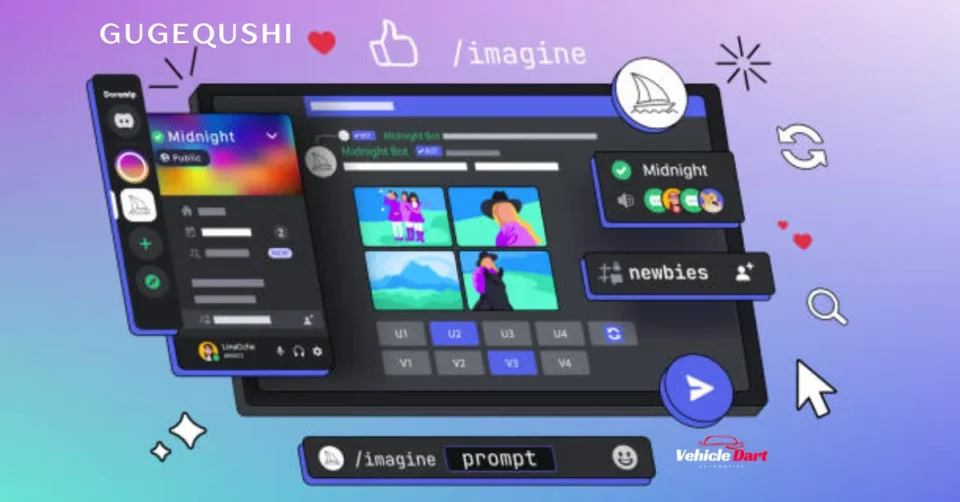Introduction to Gugequshi
The digital landscape is constantly evolving, and at the forefront of this transformation is a powerful concept known as gugequshi. This innovative approach to storytelling combines technology with creativity, allowing narratives to unfold in ways that captivate audiences like never before. As traditional media grapples with new challenges, gugequshi emerges as a beacon of hope for storytellers everywhere. It’s reshaping how we engage with stories and experience content across platforms. So, what exactly is gugequshi, and why does it matter? Let’s dive into its origins and discover how it’s revolutionizing modern media!
The History and Evolution of Digital Storytelling
Digital storytelling has roots that trace back to the early days of computing. Initially, stories were simple text-based narratives, often shared through bulletin board systems and early websites.
As technology advanced, multimedia began to emerge. The introduction of graphics and audio transformed storytelling into a more immersive experience. Flash animations became popular in the early 2000s, allowing creators to present their tales with vibrant visuals and sound.
With the rise of social media platforms, digital storytelling evolved yet again. Short videos and interactive content captured audiences’ attention in ways traditional formats couldn’t match.
Today, we see virtual reality (VR) and augmented reality (AR) pushing boundaries even further. These technologies invite users to step inside stories rather than simply observe them from afar.
The journey continues as new tools emerge, reshaping how stories are told in dynamic ways across various mediums.
The Impact of Gugequshi in Modern Media
Gugequshi is reshaping the landscape of modern media. Its unique approach to storytelling captivates audiences in ways traditional formats often cannot. By blending narrative with interactive elements, it creates an immersive experience that draws viewers in.
This format encourages engagement and participation. Audiences no longer remain passive consumers; they become active contributors to the story’s evolution. This shift enhances emotional connections and fosters loyalty among followers.
Moreover, gugequshi leverages technology creatively. From augmented reality to social media integration, stories are told across multiple platforms seamlessly. This not only broadens reach but also enriches the narrative depth.
Media companies are increasingly adopting this style to stay relevant in a competitive market filled with diverse content options. As more creators embrace gugequshi techniques, we can anticipate innovative narratives that push boundaries further than ever before.
How to Create a Gugequshi Story?
Creating a Gugequshi story is an exciting journey. Start with a compelling concept that resonates with your target audience. Think about the themes you want to explore.
Next, build relatable characters. They should evoke emotions and drive the narrative forward. Each character must have depth, flaws, and unique traits that connect them to the audience.
Incorporate multimedia elements seamlessly. This could include videos, graphics, or audio clips that enhance storytelling without overshadowing it.
Focus on pacing and structure. A captivating beginning hooks readers instantly while maintaining momentum throughout the story keeps them engaged.
Encourage interaction by integrating feedback loops or choices for your audience. This element fosters investment in the storyline and creates a communal experience around your narrative.
Revise and polish your work before sharing it widely. Make sure every aspect aligns with your initial vision of what makes a great Gugequshi story shine.
Examples of Successful Gugequshi Stories
One standout example of a successful gugequshi story is the interactive documentary “Bear 71.” It immerses viewers into the life of a bear in Canada’s national parks, blending stunning visuals with real-time data. This approach allows audiences to make choices that affect the narrative path.
Another compelling case is “The Boat,” based on Nam Le’s short story. Through animation and audio narration, it transports users into the harrowing journey of Vietnamese refugees. The emotional depth resonates deeply with audiences.
“Snowfall: The Avalanche at Tunnel Creek” by The New York Times is often cited as groundbreaking. Combining video, audio, and text, it tells a gripping tale of survival in an avalanche scenario while engaging readers on multiple levels.
Each of these stories exemplifies how gugequshi can elevate narratives beyond traditional formats, creating unforgettable experiences for their audience.
Criticisms and Challenges for Gugequshi
Despite its innovative approach, gugequshi faces significant criticisms. Some argue that the format can undermine traditional storytelling methods. The reliance on digital platforms may create a disconnect with audiences who prefer immersive narratives.
Another challenge involves accessibility. Not everyone has equal access to technology or the internet. This creates a gap where some stories remain untold, limiting gugequshi’s reach.
Moreover, creators often struggle with maintaining authenticity in their narratives. With so many voices online, distinguishing genuine stories from fabricated ones becomes increasingly difficult.
Additionally, the fast-paced nature of digital media can lead to content saturation. As more creators embrace gugequshi techniques, standing out and capturing audience attention becomes a daunting task.
Monetization remains an ongoing concern for many storytellers venturing into this space. Finding sustainable revenue streams while preserving artistic integrity is no easy feat.
Conclusion: The Future of Digital Storytelling with Gugequshi
The landscape of digital storytelling is rapidly evolving, and gugequshi stands at the forefront of this transformation. As more creators embrace its unique format, we can anticipate a shift in how stories are told and experienced. The integration of multimedia elements with traditional narrative techniques offers limitless possibilities for engagement.
As technology continues to advance, so too will gugequshi’s influence on modern media. This dynamic form invites audiences into immersive worlds where they become active participants rather than passive viewers. Its adaptability means it can cater to diverse demographics—reaching both younger generations who crave interactivity and older audiences that appreciate rich narratives.
Looking ahead, we may witness an increase in collaborations between storytellers and tech developers. Innovations such as virtual reality could further enhance the gugequshi experience, pushing boundaries even further. As creators experiment with new ways to tell their stories through this medium, the richness of human experience will find fresh avenues for expression.
The future lies in embracing these advancements while nurturing authenticity within storytelling. Gugequshi has already shown us that every story has the potential to resonate deeply when told creatively and thoughtfully. Audiences are ready for something different—a blend of imagination, technology, and heart that only gugequshi can provide as it reshapes our understanding of narrative in the digital age.
Handpicked stories you can’t miss—check out Vehicle DART for inspiration!

